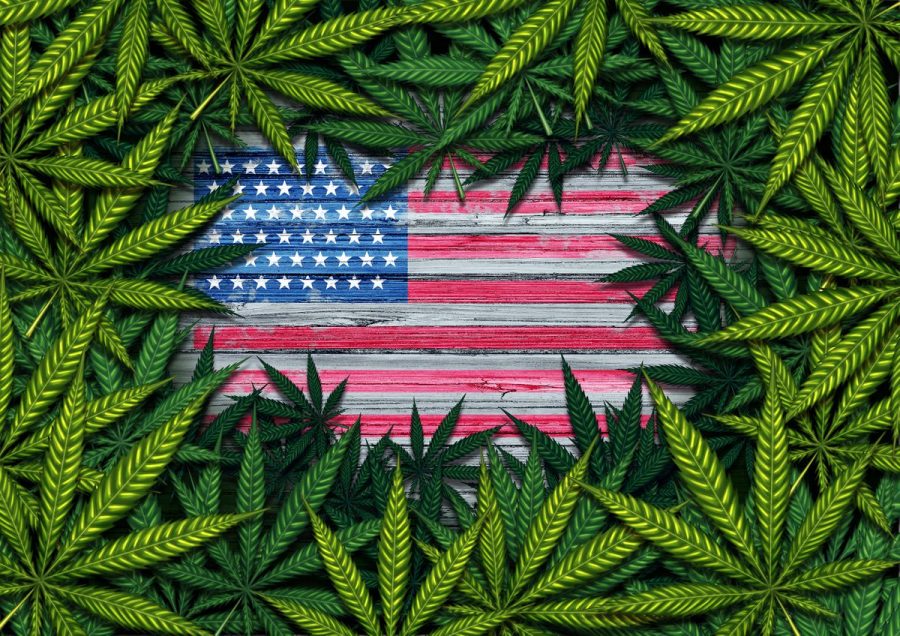The Effects of Legalizing Marijuana
January 5, 2021
Should marijuana be a legal substance for both medicinal and recreational purposes? No one can agree on this important question, and the country is divided in its drug use. California is one of 15 states (plus D.C.) that has fully legalized marijuana. Twenty states, including Hawaii and New York, authorized the use for just medicinal purposes. The rest of the country will not be offering anyone weed. However, this whole situation is very volatile and could change any day.
The first states to declare marijuana fully legal were Washington and Colorado in 2012. In 1996 California was the first state to declare marijuana legal for medicine, and in 2018 the state legalized recreational weed. Since these developments have occurred not long ago and the country is in constant flux regarding this issue, there are few hard, definitive facts that say whether fully legalizing marijuana is good or bad. The current data is very mixed, which allows every person to form their own opinion on this topic.
As far as youths are concerned, the main worry of legalizing marijuana is that it may cause an increase in adolescent use of the substance. Legalizing this drug increases its accessibility, potentially lower its cost, and creates a more generous social acceptance, making weed more enticing to youth. Legalizing weed for recreational and medicinal purposes may confuse youth as they might see it as “healthy” if it is used in certain medicines. Or perhaps they might be less appealed to take a drug used to alleviate certain diseases and conditions.
There are multiple conflicting studies about whether legalizing marijuana creates an increase or decrease among teens. One such study found that Colorado teens had a statistically significant drop in marijuana usage over the past three years since recreational legalization. Other studies show that legalizing weed as recreational creates an increase in use by teens. However, studies indicating increased usage all agree that the rise was not a drastically significant amount. As more time goes by and more studies are conducted, there will be more information on the direct effect of legal pot on youth.
While the legal age necessary to purchase the substance is 21, legalizing marijuana will make it easier for adolescents to obtain it and abuse it. It also may allow for the creation of new formulations of marijuana with higher potencies, increasing the risk of overdose and other serious complications. Studies find that people who begin using marijuana before 18 are 4 to 7 times more likely to develop an addiction to the substance. Recent health studies found that up to 30% of people who use marijuana have some marijuana use disorder. However, weed is less risky and harmful than alcohol and tobacco.
One of the positive effects of legalizing marijuana is that states can bring in a new revenue source through tax income. California pulled $345 million in 2018 from this alone. However, it was way off from the predicted $643 million, which could be due to high Californian taxes and a strong black market.
A study from Georgia State University found that alcohol sales fell by 15% in states where medical marijuana was legal and 20% where recreational marijuana is sold legally. Marijuana taxes are higher than alcohol taxes. Could legalizing marijuana cause people, especially teens, to drink less alcohol? Would it be worth it to legalize weed just so people will switch from alcohol to pot, both of which are kinds of drugs?
The act of legalizing marijuana, while controversial, has indeed changed the crime and justice system. Colorado crime has been rising since pot was legalized and in other states where recreational marijuana is legal. On a positive note, FBI data from Colorado and Washington indicate that crime clearance rates (the number of times the police solved a crime) have increased after legalization. This may be because the police no longer have to spend time on marijuana arrests and can focus on more serious threats.
